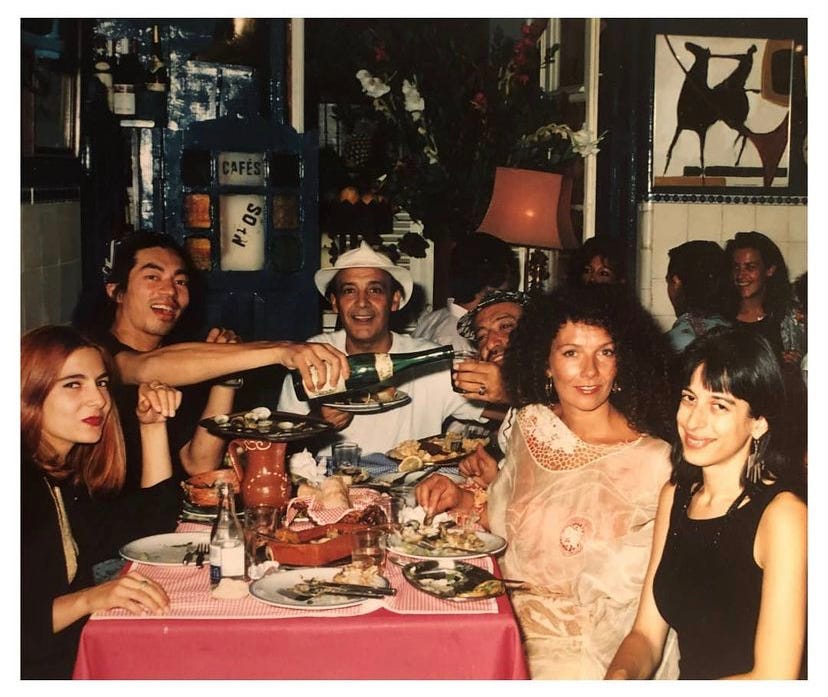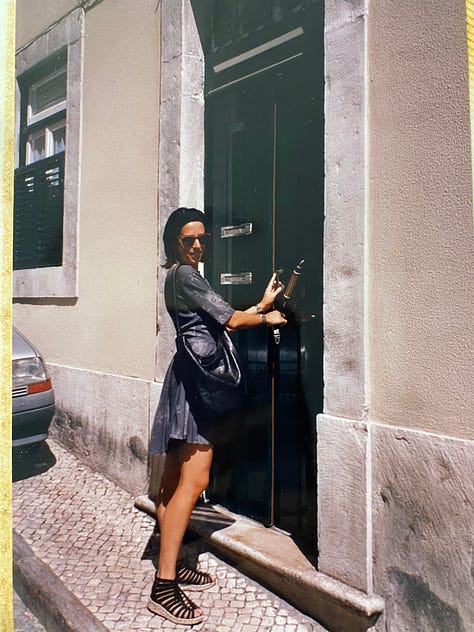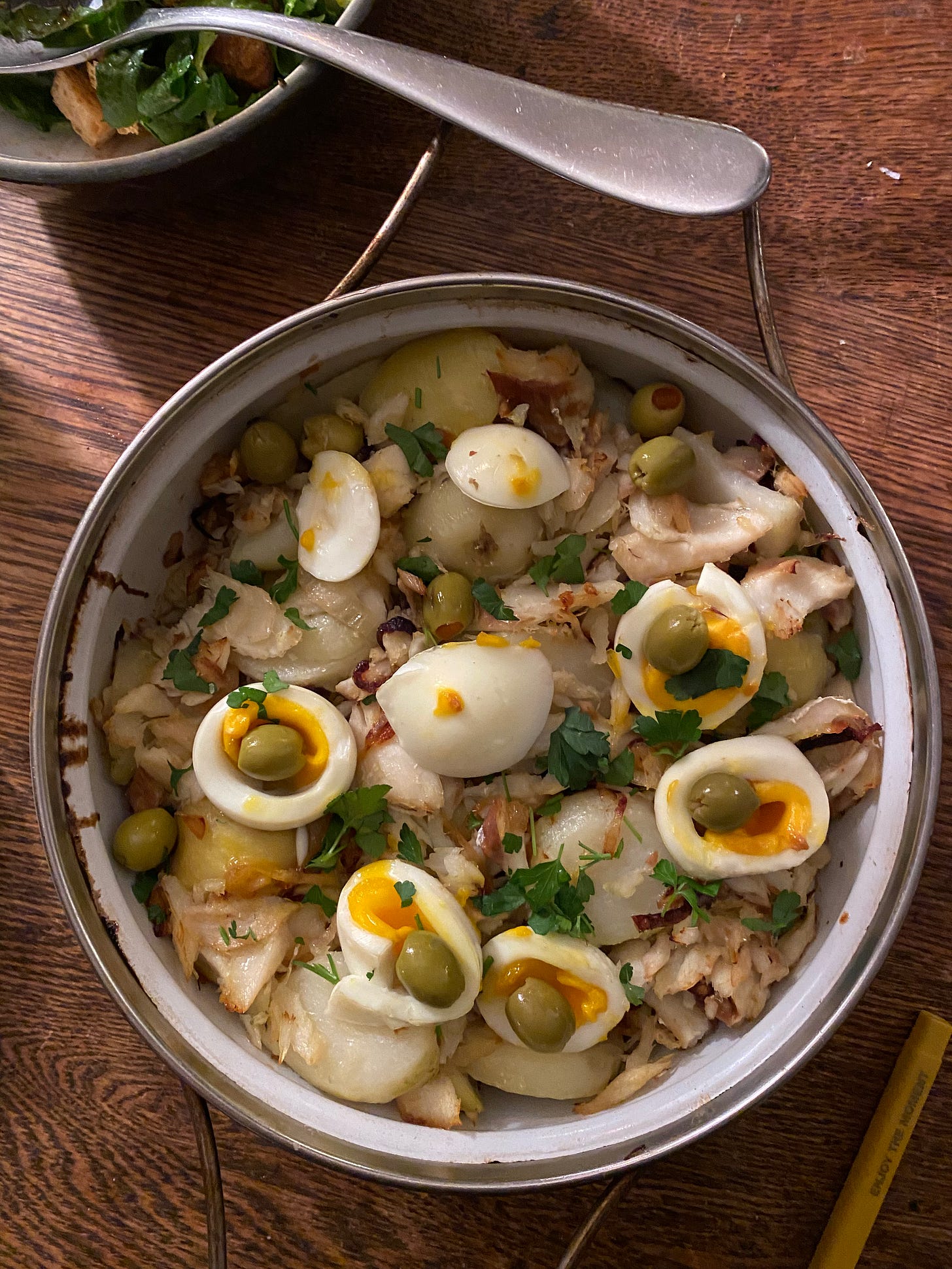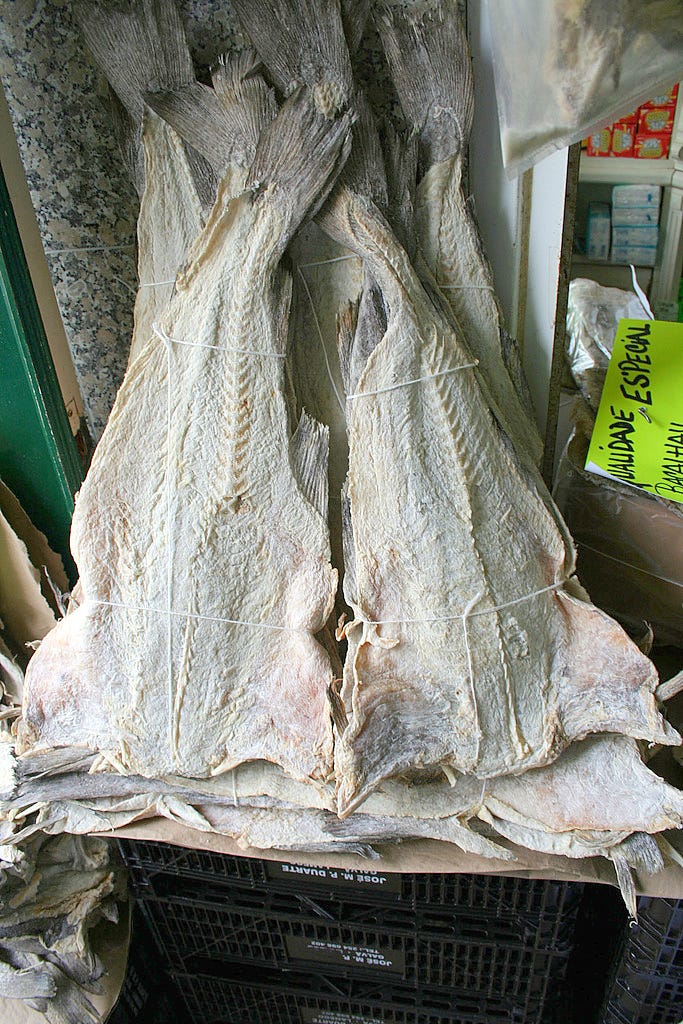
From about 1988-1994, Lisbon was my home. I lived in a beautiful old neighborhood called the Bairro Alto on one of the many “hills” of Lisbon — a neighborhood of crumbling facades, palaces with hand-painted Azuleijos (tiles), simple houses built next to palaces, a wonderful array of trendy shops and bars interspersed with traditional shops and corner restaurants.



Women dressed in black leaned out of windows, wearing headscarves, hanging their laundry out to dry in the hot sun. The knife sharpener would pedal his bicycle around the neighborhood, hawking his service with a whistle. Tramways with worn wooden seats rode up and down the hills.
It was exactly as you would imagine “Old Europe”, and I was so lucky my adventures landed me there for several years to enjoy… (I haven’t been back since then, to see how it may have changed.) This was about 15 years after the Portuguese revolution, the 1974 Carnation Revolution as it was known, a relatively peaceful military coup which ousted the authoritarian leadership and opened the way for free elections (largely in the wake of wars and turmoil in Portugal’s colonies.
When I was living in Lisbon in the 80s the relief was still palpable. The Portuguese had lived under this oppressive rule for decades — where family members might disappear forever for raising a glass “To Liberty — Liberdade” at a private family meal (the PID was the secret police responsible for rounding these people up). So now, parents who had grown up in this environment were overjoyed that their children could experience something different — at night the streets were teeming with clubs and dancing. Freedom…
From the Bairro Alto, I would ride the funicular train down the steep hill to the Central Market along the banks of the Rio Tejo. The lower floor of the market (before it was more recently refurbished into a food hall) was dominated by the fishmongers: strong-voiced, stocky women in knee-high rubber boots with an array of fish straight from the boat — Peixe-espada, which look like a silver blade, beautiful robalo, dorado, sardinhas, squid, octopus, and so much more. You could also find bacalhão (dried salt cod) in every shape and form, looking like fish hides, stacked and classified.
Carlos and I would carry our market haul back home, up the steep funicular train, laden with fish, greens, potatoes and cilantro — and if we were lucky, some donut peaches and figs — and it was against this backdrop that I first learned to cook anything beyond the most basic student fare.
Carlos had learned how to cook from his grandmother, and I learned how to cook from Carlos. I learned how to dissect the squid, removing its black ink sack, beak, and the cartilage from its back. I learned how to desalt the salt cod. I learned how to use my thumbnail to flick off the sprout from the fava beans as they were shelled. The wee sprouts were “indigeste” Carlos would say in French — our shared language — “c’est pour les cochons”— just like the sprout inside a clove of garlic, and tomato skins and seeds: all “indigeste”. I learned that cilantro was good with just about everything and that the proper way to eat a grilled sardine is to use a slice of bread as a plate (so it collects the salty drippings), to pluck its skin off in one piece like removing its jacket, and eat the fish like a corn on the cob, biting the salty grilled flesh off the fine skeleton — oh and also, that the sardine cheeks are the best part.
"Saudade" is a nearly untranslatable Portuguese word. Trusty Wikipedia defines it as “the love that remains” after someone is gone. It can be described as an emptiness, the overwhelming feeling of that missing someone or something that should be there in a particular moment, but is not.
One of the ways I fill this void (my Saudade for both Portugal and Carlos too) is by cooking some of the meals we used to make together. When English Peas come into season in the spring, it’s peas with eggs (here’s my recipe for Ervilhas Guisadas). And when the Favas arrive (the beacons of Spring), I cook them with chorizo sausage and a good handful of cilantro. If only the “farinheira” or doughy sausage was available around here to complete the experience (I’m told in New Bedford Massachusetts there is a vibrant Portuguese fishing community with shops specializing in all these things!). But the food I most associate with Portugal is Bacalhão (dried salt cod).
For a nation facing the ocean (with their backs planted firmly to Spain), the Portuguese population was dominated by explorers and fishermen. They were often at sea, inspiring the wistful songs called Fado, which you could hear live, most nights, wafting out of the crowded bars around my neighborhood. Here, dried salt cod became a Portuguese staple as this fish required no refrigeration to stay fresh and so it kept the entire country nourished. There are literally hundreds of different ways to prepare it but having recently thumbed through a new Portuguese cookbook, the dozens of bacalhão recipes listed mostly involve some variation of salt cod meets potatoes, onions, eggs and olives (or olive oil)!
Bacalhão is an acquired taste. The fish has a meatier texture than fresh cooked cod, and if you don’t desalt it enough (by soaking it in water overnight, and changing the soaking water a couple of times), you will have a very salty, possibly inedible meal. I’ve learned…
In Portugal, one of the most common “bar” treats, perfect with a cold glass of Portuguese beer after a hot day, are Bolinhos de Bacalhão — little egg-shaped fritters made of a mix of salt cod, potato and parsley.
And though not my personal favorite, I remember countless festive meals where the centerpiece of the table was bacalhão served boiled with vegetables Bacalhao con Todos — a thick steak of bacalhão boiled with potatoes, turnips, carrots and “grelhos” or turnip greens, chick peas, and boiled eggs, presented with a cruet of olive oil and vinegar to dress it with.
The variation I tend to cook is Balcalhão a Gomes de Sá (a recipe that’s been kicking around since it was invented by a cod merchant and chef in the 18th century!) I’ve been overjoyed to find little boxes of de-boned salt cod here at our local grocery Coop — yes I am so happy to be living in a fishing community once again, here in Deer Isle, Maine.
I have tried different recipes for this dish but basically it’s a casserole with layers of pre-cooked potato, browned onion, shredded de-salted cod, garnished with hard boiled eggs and olives. And lots of olive oil.

This is a great gateway dish for acquiring the Bacalhão taste. But since Lisbon and Portugal seem to be top travel destinations recently, perhaps you have already acquired this taste, and will want to indulge in some Saudade of your own, in the kitchen. If so, let me know what you cook, and boa appetito!





